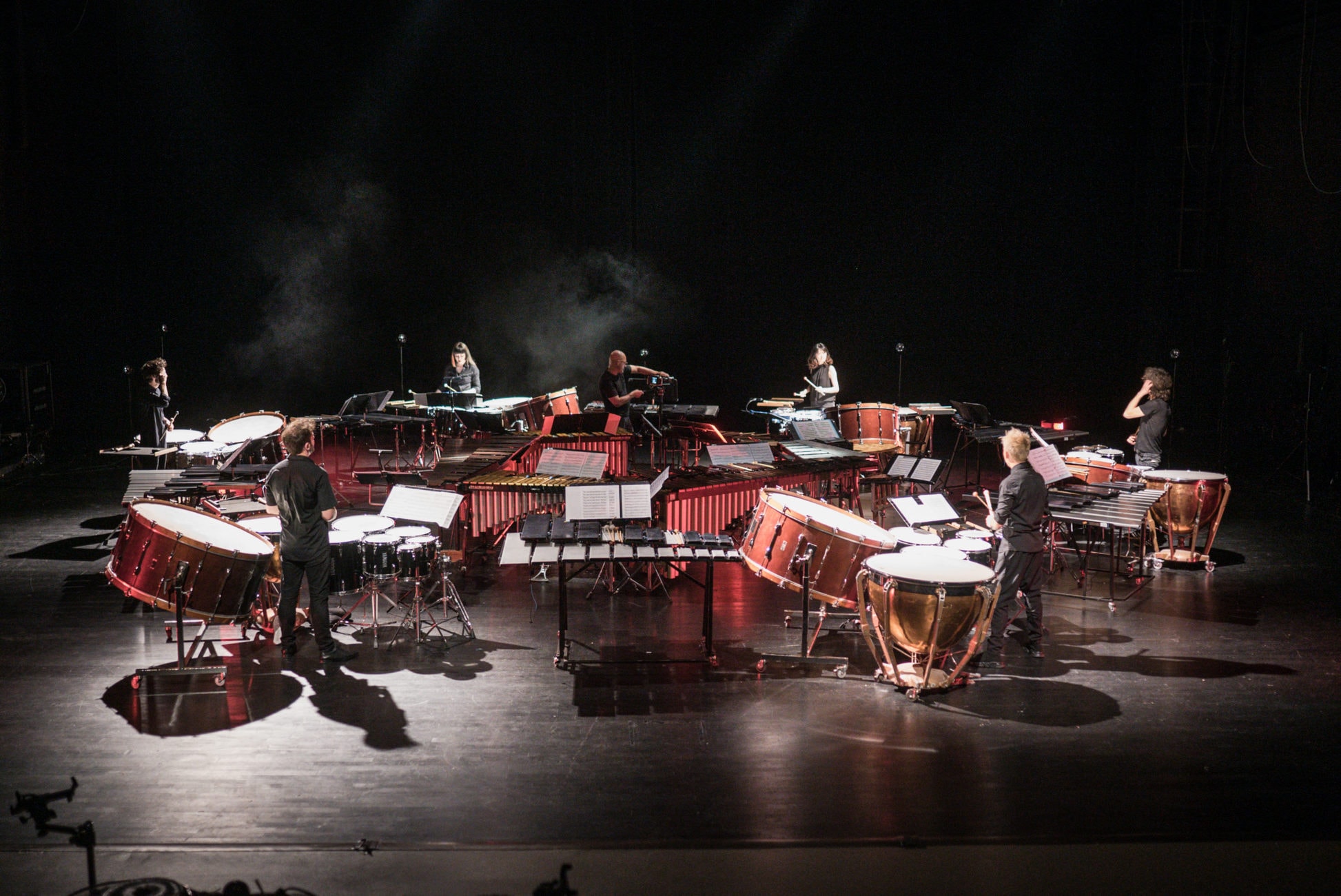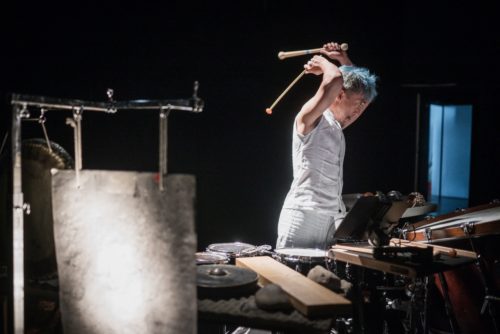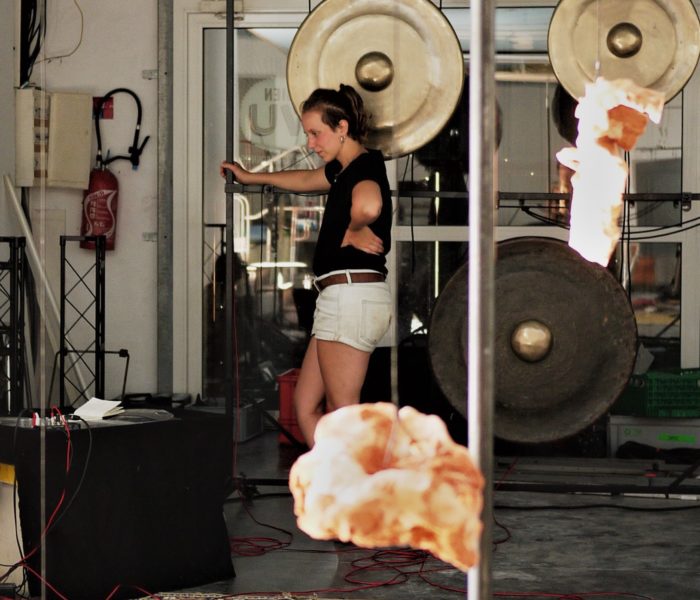C’est la quatrième génération des Percussions de Strasbourg (deux filles et quatre garçons) qui est sur le plateau de la Cité de la Musique, fêtant les soixante ans de la phalange strasbourgeoise et le centenaire de la naissance de Xenakis. Les deux œuvres au programme, qu’ils viennent d’enregistrer sous leur propre label, ont été écrites pour les fondateurs du groupe et créées aux côtés de Xenakis à dix ans d’intervalle : en 1969 s’agissant de Persephassa, révélé au public sur le site grandiose de l’Apadana de Persépolis, et en 1979 pour Pléiades, chef d’œuvre intemporel que l’on entend en début de soirée.
Xenakis, en bon architecte des sons, s’est toujours préoccupé de la nature du matériau et de la façon dont le son devait circuler dans l’espace. Pour les Pléiades, le public est autour des six percussionnistes positionnés en cercle suivant le périmètre de la scène ; précisons que la salle modulable de la Cité de la Musique a été reconfigurée pour répondre aux vœux du compositeur visionnaire. Les sets de percussions pour chacun des musiciens sont relativement semblables : claviers, peaux (grosse caisse, toms, bongos) et bois (temple blocks, wood blocks, etc.) ainsi que les sixxens (mot valise comprenant le chiffre six des percussionnistes et les trois premières lettres de son nom) qu’il fait construire pour l’occasion. C’est un clavier métallique de 19 hauteurs accordé en quarts de ton dont le timbre laryngé n’est pas sans évoquer les couleurs du gamelan. En 1973, Xenakis a fait un voyage en Indonésie avec quelques amis, (dont Betsy Jolas, Marie-Françoise Bucquet, Toru Takemitsu...) pour mieux s’imprégner de ces nouvelles sources sonores.
Les six percussionnistes arrivent sur scène (et repartent) en courant! L’ordre des quatre mouvements de la partition – Peaux, Métaux, Claviers, Mélanges – étant laissé au choix des interprètes, c’est avec Mélanges qu’ils débutent, lieu où s’enchevêtrent et se superposent les trois qualités percutées. La section des Métaux est plus jubilatoire encore, avec ce fond de pentaphonie qui enchante les résonances. La section réservée aux sixxens est la plus longue, la plus sonore aussi, les interprètes ne ménageant ni leur force de frappe ni le tympan des auditeurs (des bouchons d’oreille sont distribués à l’entrée de la salle comme dans les concerts de noise!) : jubilation du timbre, variété des dynamiques et spectre infini des couleurs qui se renouvellent au gré des configurations rythmiques. Le final réservé aux peaux a quelque chose de sauvage et primal sous le geste engagé des percussionnistes : rebond énergétique, déflagration, crépitement et polyrythmie donnent lieu à des développements aussi complexes que contrôlés qui finissent par glisser progressivement vers le silence.
C’est ce même crépitement des peaux, envoûtant autant que tellurique, à l’exclusion de toute autre matière percutée, qui débute Persephassa donnant lieu à une création lumière très réussie. Comme dans Pléiades, Xenakis a recours aux algorithmes (technique des cribles) pour élaborer ses périodicités rythmiques, garantissant le renouvellement constant des comportements instrumentaux et des structures temporelles.
Persephassa (nom archaïque de Perséphone), est une commande de Mehdi Bousheri pour le festival des Arts de Shiraz-Persépolis accueillant des musiques traditionnelles venues du monde entier (Xenakis y entend pour la première fois la musique de Bali) ainsi que des créations occidentales. « Les six groupes d’instruments ont été répartis circulairement entre les vestiges des colonnes du palais de Darius […], lit-on dans l’historique de la création.
Dans la Salle des concerts, les six musiciens tout de blanc vêtus, se tiennent à l’étage et entourent le public. Plus inattendue que Les Pléiades, la partition ménage des silences éloquents, accusent les contrastes et réservent des surprises : sons grêles des simandres (planches de bois ou de métal), sirènes de bouche, pierres entrechoquées ; toutes ces données sont rassemblées dans un final très coloré mettant à l’œuvre l’énergie cinétique d’une musique qui accélère et d’un mouvement qui s’affole (vibration des plaques tonnerre) jusqu’au fameux « tourniquet final » assumé par les toms en relai et la vitalité du geste de nos six percussionnistes donnant à voir autant qu’à entendre le tourbillon xenakien.
Michèle Tosi



)








